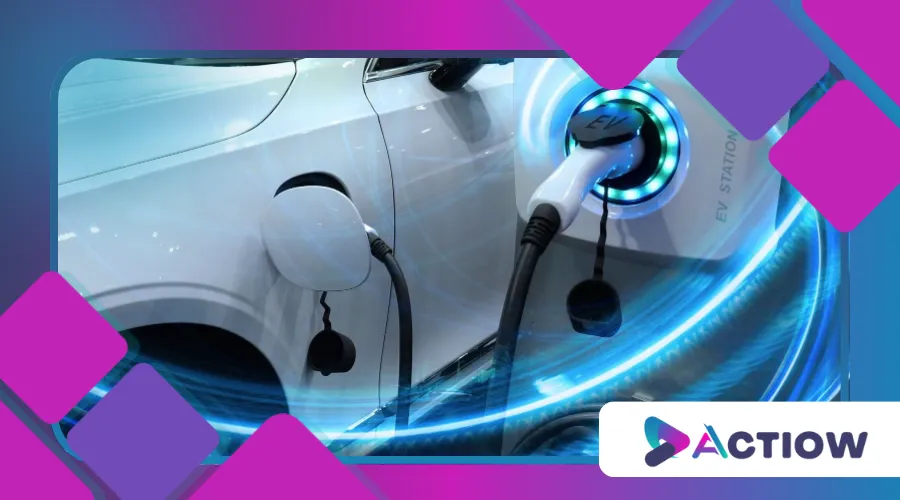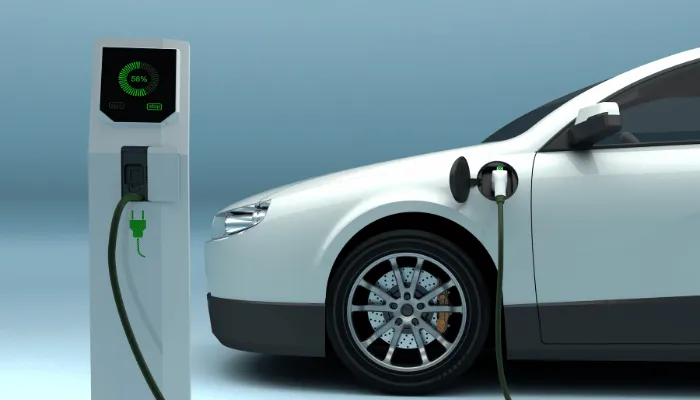Bidirectional Charging Technology: What It Is and How It Works

Anúncios
Bidirectional charging technology is transforming how we interact with electric vehicles (EVs) and the energy grid, creating a dynamic, two-way energy ecosystem.
Imagine your EV not just consuming power but giving it back, like a digital handshake between your car and the world around it.
This innovative system allows EVs to both draw electricity from the grid and supply it back when needed, redefining their role from mere transportation to mobile energy hubs.
Anúncios
As the world races toward sustainability, this technology is emerging as a game-changer, blending efficiency, cost savings, and environmental impact.
But what exactly is it, and how does it work? Let’s dive into the mechanics, benefits, and future potential of this electrifying innovation.
Understanding the Core of Bidirectional Charging
At its essence, bidirectional charging technology enables an EV to function as a power source, not just a power consumer.
Unlike traditional unidirectional charging, where electricity flows only from the grid to the vehicle, this system allows energy to travel in both directions.
It’s akin to a conversation rather than a lecture—your EV can “talk back” to the grid or even your home.
This is made possible through advanced power electronics, sophisticated software, and compatible charging hardware that manage the flow of electricity with precision.
The process hinges on the vehicle’s onboard charger and a bidirectional-capable charging station.
These components work together to convert alternating current (AC) from the grid into direct current (DC) for the battery and vice versa when discharging.
The technology comes in three main flavors: Vehicle-to-Grid (V2G), Vehicle-to-Home (V2H), and Vehicle-to-Load (V2L).
Each serves a unique purpose, from stabilizing the grid to powering your house during an outage or even running a campsite’s appliances.
According to a 2024 study by the International Energy Agency (IEA), V2G systems could reduce global grid carbon emissions by up to 5% by 2030 if widely adopted, highlighting the technology’s potential.
In addition, as the demand for renewable energy sources grows, bidirectional charging can play a crucial role in managing energy supply and demand effectively.
By allowing EVs to return energy to the grid, we can create a more resilient and sustainable energy ecosystem.
How It Works: The Technical Breakdown
To grasp how bidirectional charging technology operates, picture a smart energy broker inside your EV.
The system relies on a combination of hardware and software to manage energy flow.
When charging, the EV’s onboard charger converts AC from the grid into DC to store in the battery.
When discharging, the process reverses: the battery’s DC is converted back to AC to power external systems.
This requires a bidirectional charger, often integrated into the vehicle or the charging station, and a communication protocol to coordinate with the grid or other devices.
For example, in a V2G setup, an EV might charge during off-peak hours when electricity is cheap and renewable sources like solar are abundant.
Later, during peak demand, it can feed stored energy back to the grid, earning the owner credits or reducing energy costs.
In a V2H scenario, imagine a blackout in Seattle during a winter storm.
Your EV, parked in the garage, could power your home’s essential appliances—lights, refrigerator, even a heater—keeping your family comfortable until the grid is restored.
The table below outlines the key components of bidirectional charging:
| Component | Function |
|---|---|
| Onboard Charger | Converts AC to DC for charging and DC to AC for discharging. |
| Bidirectional Charger | Manages two-way energy flow between the EV and external systems. |
| Communication Protocol | Ensures safe, efficient energy transfer with grid or home systems. |
| Battery Management System | Monitors battery health and optimizes charge/discharge cycles. |
+ Cars with Smart Lights: Revolutionizing Night Visibility
This synergy of components ensures bidirectional charging is both safe and efficient, adapting to real-time energy demands.
Additionally, the integration of smart technology allows for real-time monitoring and optimization of energy usage, enhancing the overall efficiency of the system.
As technology advances, we can expect even more sophisticated systems that further improve energy management capabilities.

The Benefits: Why It Matters
Why should you care about bidirectional charging technology?
For starters, it’s a financial win.
By selling excess energy back to the grid during peak hours, EV owners can offset charging costs or even turn a profit.
In regions with time-of-use pricing, like California, this could save households hundreds of dollars annually.
Beyond economics, it empowers energy independence.
During outages, an EV with V2H capability becomes a lifeline, powering critical devices without reliance on fossil-fuel generators.
Environmentally, the technology aligns with the push for renewable energy.
By storing solar or wind power and releasing it when needed, EVs can smooth out the intermittent nature of renewables, reducing reliance on coal or gas plants.
It’s like having a battery bank on wheels, stabilizing the grid while cutting emissions.
For businesses, bidirectional charging opens new revenue streams.
Imagine a fleet of delivery vans in New York City, each feeding energy back to the grid during peak hours, collectively easing strain on urban infrastructure.
Moreover, the ability to utilize stored energy during high-demand periods can significantly reduce operational costs for businesses, making them more competitive.
This not only benefits the companies but also contributes to a more stable energy grid.
Real-World Applications: Two Original Examples
To illustrate the impact of bidirectional charging technology, consider Maria, a freelance graphic designer in Austin, Texas.
She owns a Ford F-150 Lightning with V2H capabilities.
During a scorching summer, a grid failure leaves her neighborhood without power.
Maria connects her EV to her home’s electrical system, powering her air conditioning, laptop, and Wi-Fi for three days.
Her work continues uninterrupted, and she avoids the cost of a hotel stay.
The EV’s 98-kWh battery proves more than sufficient, showcasing the practical value of V2H.
Now, picture a small coffee shop in Portland, Oregon, run by Javier, who operates a fleet of electric delivery vans equipped with V2G technology.
By participating in a local utility’s demand-response program, Javier’s vans charge overnight when electricity is cheapest and discharge during the city’s peak evening hours.
This earns him $500 monthly in grid credits, covering half his fleet’s charging costs.
These examples show how bidirectional charging technology transforms EVs into versatile assets for individuals and businesses alike.
Furthermore, these real-world applications highlight the adaptability of bidirectional charging technology across various sectors, from residential to commercial use.
As more people recognize these benefits, adoption rates are likely to increase, leading to a broader impact on energy management.

Challenges and Considerations
No technology is without hurdles.
Bidirectional charging requires compatible infrastructure—chargers, grid systems, and EVs must all speak the same technical language.
Currently, only a handful of models, like the Nissan Leaf or Tesla Cybertruck, support bidirectional charging, limiting adoption.
Retrofitting existing vehicles or homes for V2H or V2G can also be costly, with installation fees ranging from $2,000 to $10,000 depending on the setup.
Battery degradation is another concern.
Repeated charge-discharge cycles can wear out an EV’s battery faster, potentially reducing its lifespan.
Manufacturers are addressing this with smarter battery management systems, but it remains a point of scrutiny.
Regulatory barriers also loom large.
In some regions, utilities lack frameworks to compensate EV owners for grid contributions, slowing V2G adoption.
++ Onboard Diagnostic Systems: How to Monitor Your Car’s Health
The table below summarizes key challenges and potential solutions:
| Challenge | Potential Solution |
|---|---|
| Limited vehicle compatibility | Expand bidirectional support in new EV models. |
| High infrastructure costs | Subsidies or incentives for home and grid upgrades. |
| Battery wear | Advanced battery management to minimize degradation. |
| Regulatory gaps | Develop standardized policies for V2G compensation. |
Despite these obstacles, ongoing innovations and government incentives are paving the way for broader adoption.
In addition, as awareness of the technology’s benefits grows, consumer demand may drive manufacturers to invest more in compatible vehicles and infrastructure.
This could lead to a more robust ecosystem supporting bidirectional charging.
The Future: A Grid-Powered Revolution
What’s next for bidirectional charging technology?
The horizon is bright.
As more automakers integrate this feature, economies of scale will drive down costs.
By 2030, analysts predict over 30% of new EVs will support bidirectional charging, spurred by demand for resilient energy systems.
Smart grids, equipped with AI to optimize energy flows, will amplify the technology’s impact, creating a seamless dance between EVs, homes, and utilities.
Imagine a future where entire neighborhoods share energy via their EVs, creating microgrids that withstand natural disasters.
Or consider rural communities, where V2L-equipped EVs power schools or clinics during outages.
This isn’t science fiction—it’s a tangible shift, with pilot programs already underway in places like the Netherlands and Japan.
The question isn’t whether bidirectional charging will reshape our energy landscape, but how quickly we’ll embrace its potential.
Moreover, as governments worldwide push for cleaner energy solutions, bidirectional charging will play a pivotal role in achieving sustainability goals.
This technology not only enhances energy resilience but also supports the transition to a greener economy.
For more insights on the future of bidirectional charging technology, you can visit Electrek.
Engaging the Bigger Picture
Bidirectional charging technology isn’t just about powering your car—it’s about reimagining energy itself.
Why settle for a one-way street when you can create a highway of possibilities?
By turning EVs into active players in the energy ecosystem, this technology bridges the gap between transportation and sustainability.
It empowers individuals, strengthens grids, and cuts carbon footprints, all while saving money.
As we face climate challenges and energy uncertainty, bidirectional charging offers a practical, forward-thinking solution.
From Maria’s blackout-proof home to Javier’s cost-saving fleet, the applications are as diverse as they are impactful.
With 1.4 million EVs sold globally in Q1 2025 (per BloombergNEF), the stage is set for bidirectional charging to scale.
The technology’s ability to integrate with renewables, stabilize grids, and empower users makes it a cornerstone of the clean energy revolution.
As we move toward a future where energy flows freely in both directions, bidirectional charging technology stands as a beacon of innovation, proving that our vehicles can do far more than just drive us forward.
Additionally, as more consumers adopt EVs with bidirectional capabilities, we can expect a cultural shift towards valuing energy efficiency and sustainability in everyday life.
This shift will not only benefit individuals but also contribute to a more sustainable future for all.
